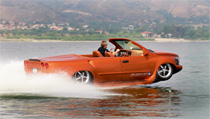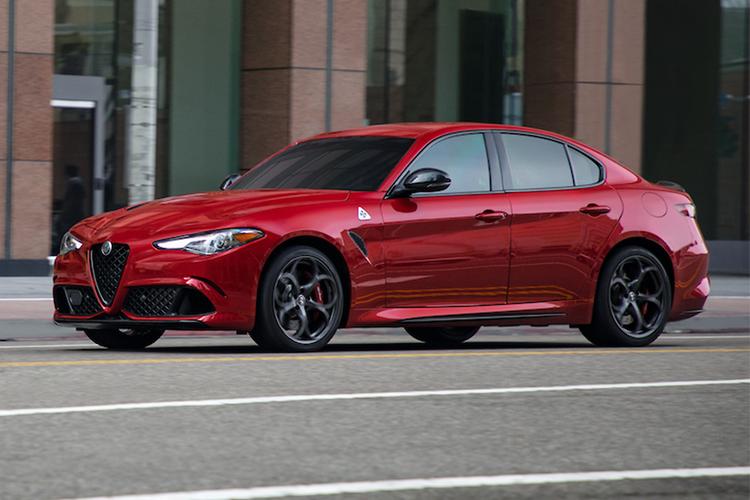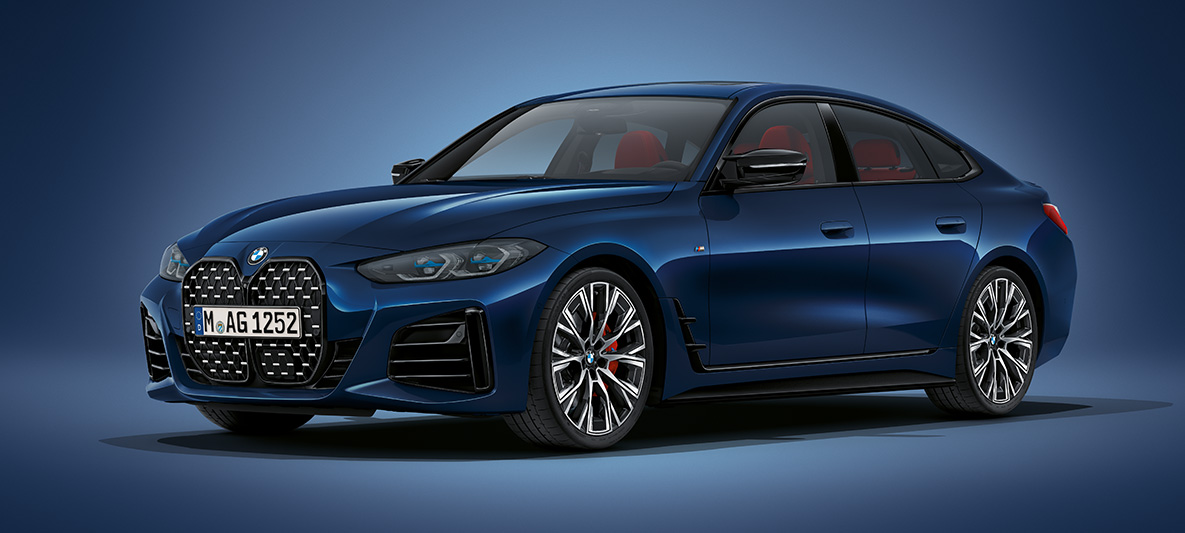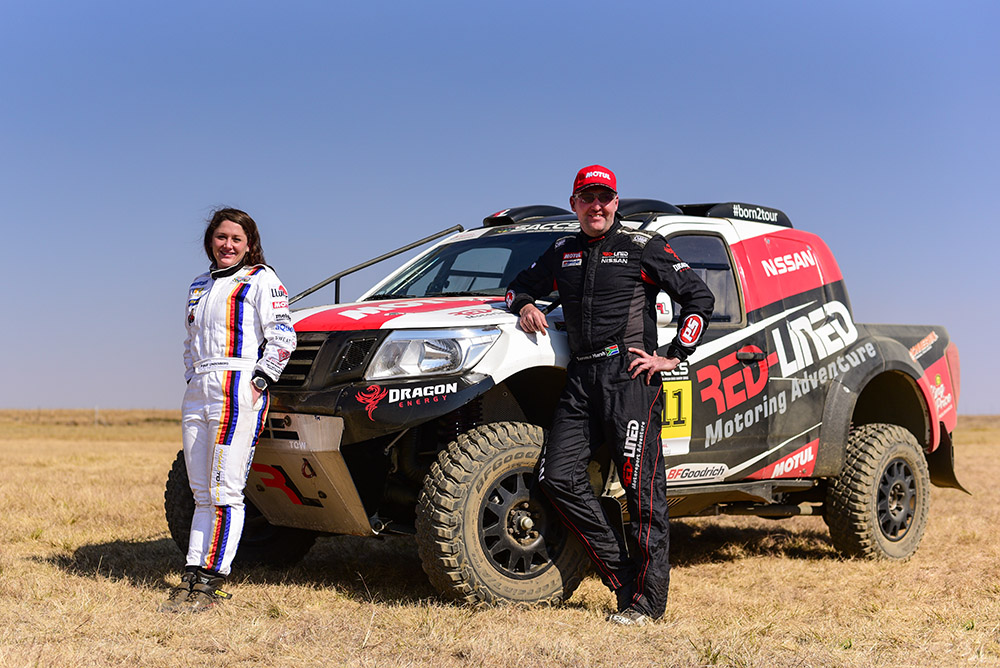Text: Danie Botha
The theory seems waterproof enough.
Take one very powerful Chevrolet Corvette-sourced V8 engine, which delivers up to 415 kW of power, strap it into a light-weight stainless steel structural frame, and wrap the frame in composite materials to resemble a truck cum sportscar cum speedboat.
Next, rig a powerful Dominator jet pump impeller-drive to the rear of the thing, and link it to the aforementioned 415 kW V8 engine.
In the spacious and luxurious cab, with seating for five passengers, you add a fancy wooden-dashboard with special buttons to retract the wheels (pneumatically) when you take to the water. Another dash-mounted button starts that Dominator jetski powerplant, as soon as you hit the water and select neutral with the gearbox.
When you add all of this together you get? the fastest amphibian vehicle in human history. Or the WaterCar Python, in short.
But the R1,6-million ready-to-roll-and-sail Python is a bit of an monstrosity. A bit like a very fast Frankenboat. The front-end of the Python is modelled along the lines of a Dodge Ram bakkie. The interior is more boat than car. And the rear is Chevrolet Corvette. At 20-foot long, it ain’t small either.
Although Python creator Dave Marsh, a highly experienced boat and vehicle builder, insists that all the materials used are state-of-the-art, the fact remains that the basic mechanics behind this amphibious vehicle are rather simple and straightforward. A rear-mounted American V8 that drives the Python on land, and powers a jet engine that provides in-water steering (like a jetski), in a frame that also happens to have wheels that fold away pneumatically. At the moment you can’t even get a roof either, although a removable hardtop is currently under development.
So there is nothing particularly rocket science-y or particularly innovative-y about the deal. Just pure brute force and ignorance, really.
But the claimed numbers sure are impressive. With the top-spec Chevrolet LS9 V8 engine fitted, which sends its power to the rear wheels via a four-speed manual gearbox, the Python can accelerate from 0-100 km/h in just 4,5 seconds and run to a top speed of more than 200 km/h on land. On water it can do 100 km/h.
Another interesting aspect of the Python is its customisability. Owners can choose between more than 60 000 exterior colours and 4000 interior colours and finishes. The Python can also be had as “a rolling chassis” for around R1,36-million. All the customer then need to do is fit a suitable engine and transaxle.
Or one can buy a complete vehicle for around R1,6-million (in the US), depending on which Chevy V8 engine one prefers.
A bit too rich for you?
Then WaterCar has just the ticket: the Gator.
The Gator is essentially a Volkswagen Beetle 1.6 wearing a Jeep CJ8-lookalike fibreglass and foam-filled body. The Gator is available as a kit car assembly for Do it Yourselfers, and the company says it will cost between R320 000 and R400 000 (in the US) to build, depending on specification and equipment.
But although the Gator is said to be able to reach 140 km/h on land, it will only do 13 km/h on water? so it’s not nearly in the same league as the Python when it comes to speed.
But, says creator Dave March, the Gator will be able to transverse more rugged terrain. The rear-wheel driven Gator, weighing in at a relatively light 1133kg, is said to boast 250mm ground clearance. So it should be okay for the rough farm road leading to your local dam.
Okay, but what about more speed? Surely the Gator can go faster?
It sure can.
It all depends on the thickness of one’s wallet, and/or one’s relationship with the bank manager. According to the company, the Gator was designed for an air-cooled Volkswagen engine, but there are many hot Volksie engines on the market which can be fitted, ranging from about 56 to 150 kW. If that’s still not enough, a four-cylinder Subaru boxer engine can also be fitted, although the company warns that this will add to the complexity of the kit. But it can be done.
And you’ll probably one day come across a Gator powered by a flat-six Porsche engine too!
Available as both left and right-hand drive models, the Python and Gator have been in development for several years now, and WaterCar is now gearing up to start sales across the globe.
Only time will tell whether the WaterCar concept will sink or swim. Either way, it’s going to do it pretty quickly, especially if it’s a Python.
Python: Joe Public speaks
“This is definitely a compensation-wagon for when your pecker stops working without the aid of batteries and hydraulics.” – Internet forum.
“Wow! That is like the coolest amphibious I have ever seen!” – Internet forum.
“Might sell well to Somali pirates.” – Internet forum.
“I like it. It cuts the clutter of having a car that can tow, a trailer, and a boat. It’s simple and looks fun!” – Internet forum.
November, 1977: After decades of American and British domination of official water-speed records, Australian Ken Warby sets a new record of 464 km/h in his home-built Spirit of Australia. After his initial record-breaking run sponsors take more notice and Warby improves his original design, thanks to more money at his disposal. In 1978 he breaks his own record with an average speed of 511 km/h. Spirit of Australia was powered by a Westinghouse J34 turbojet engine, and Warby’s record stands to this day. Several people have died over the years in an attempt to go faster.
June, 2004: Sir Richard Branson, the British adventure junkie who also happens to be the boss of the multi-billion dollar Virgin brand, sets a new Guinness World Record for the fastest crossing of the English channel in an amphibious vehicle. He breaks the original record, set in the late 1960s by two Frenchmen, by more than four hours to complete the 35km crossing in 1:40:06. The Gibbs Aquada has a 160 km/h top speed on land, but can reach “only” about 60 km/h on water.
The 2,5-litre V6 powered Aquada hails from American company Gibbs Technologies.
March, 2008: Swiss design company Rinspeed shows its sQuba concept vehicle. The sQuba takes the “water car” concept one stage deeper. This all-electric vehicle can do more than 120 km/h on land, but can also “dive” up to 10 metres deep, remaining fully manoeuvrable. A 57 kW electric motor provides propulsion on land, while two small 800W Seabob jet drives provide a 6 km/h water speed, and 3 km/h submersible speed.
The occupants’ breathing air comes from an integrated tank of compressed air. The sQuba also features autonomous driving on land thanks to a sophisticated laser sensor system, a salt-water resistant interior, and state-of-the-art VDO instrumentation, which allows the occupants to control all vehicle functions, even when submerged.









